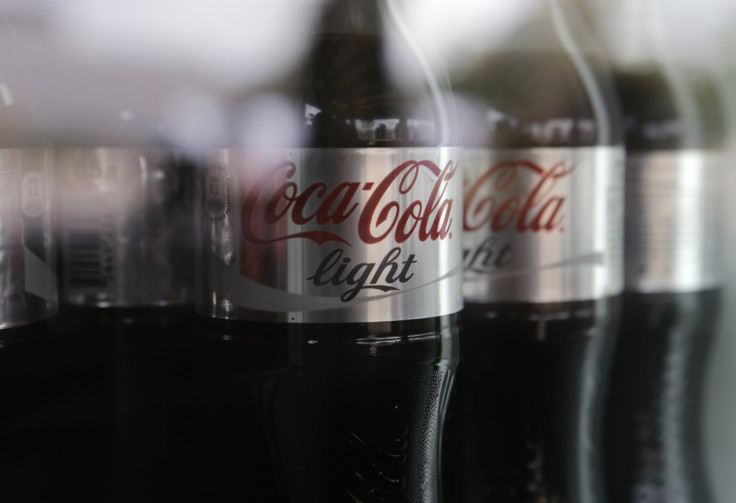Why Coca-Cola Is Laying Off Executives At Its Atlanta Headquarters

Americans just aren’t guzzling carbonated drinks as much as they used to. The latest evidence of this trend emerged Thursday when Coca-Cola Co. announced it is laying off as many as 1,800 corporate staffers. The cuts, most of which will come from the company’s Atlanta headquarters, represent a significant paring down of Coca- Cola’s 13,000-strong leadership corps.
The world’s largest beverage maker is facing what company Chairman and CEO Muhtar Kent called a “critical year” in an October conference call announcing a 14 percent drop in third-quarter earnings. In 2013 revenue fell 2.4 percent to $46.9 billion. For 2014 it’s expected to have dropped nearly 6 percent to $45.9 billion, according to a Thomson Reuters estimate.
As part of its effort to trim $3 billion in expenses by 2019, the company has cut top-end perks, including putting executives in taxis instead of limos. But with these cuts have also come significant investments, including a minority stake in Keurig Green Mountain, the Waterbury, Vermont-based maker of premium single-cup coffeemakers. This is part of an effort to reduce its heavy dependence on soft drinks, which make up 70 percent of its global revenue stream.
Coca-Cola Co. will release its 2014 fourth-quarter results and annual report on Feb. 17. Analysts polled by Thomson Reuters expect quarterly net profit to decline 8 percent, to $1.89 billion, on 2 percent lower revenue of $10.8 billion. Quarterly earnings per share minus one-time charges are expected to be 43 cents, down from 46 cents in the previous year.
Full-year revenue is seen declining 2 percent to $45.94 billion and net profit shrinking nearly 4 percent to $9.02 billion. Unadjusted earnings per share for the year are expected to be $2.04, down from $2.08 in 2013.
“Revenues through the first nine months of the year [2014] remained flat, on the back of little to no growth in mature beverage markets in the developed world, and increased volatility in the emerging economies,” said a note from Trefis Research.
Chief Corporate Officer Kathy Waller acknowledged these issues in a conference call last month. “There are macroeconomic challenges in Brazil, there are challenges in China."
Coca-Cola is facing flagging sales in Europe, too, as competitor PepsiCo sees considerable gains with its enormous snack foods business in emerging markets. Coca-Cola’s main rival had a good run in 2014, raising its earnings forecast twice last year.
But it would be risky to bet against Coca-Cola, a consistent dividends-paying old-school staple of any well-balanced, buy-and-hold portfolio. The company’s stock has seen growth for six consecutive years.
On Monday, Morgan Stanley gave a nod to the company’s strategy, saying the bad news is behind it and the “critical” year of 2015 looks to be a start of a rebound for the 129-year-old company. The bank upgraded the company to “overweight,” which means it expects Coca-Cola to outpace the market, with a price target of $47. "Investors will start to price in improving fundamentals with rebounding topline growth on higher Coke pricing and Coca-Cola market share gains due to higher marketing," Morgan Stanley said.
Coca-Cola's stock price gained 52 cents on Thursday, closing at $43.51. The stock price has gained 3 percent since the start of the year. The company currently pays a dividend of 31 cents per share every quarter.
© Copyright IBTimes 2024. All rights reserved.






















